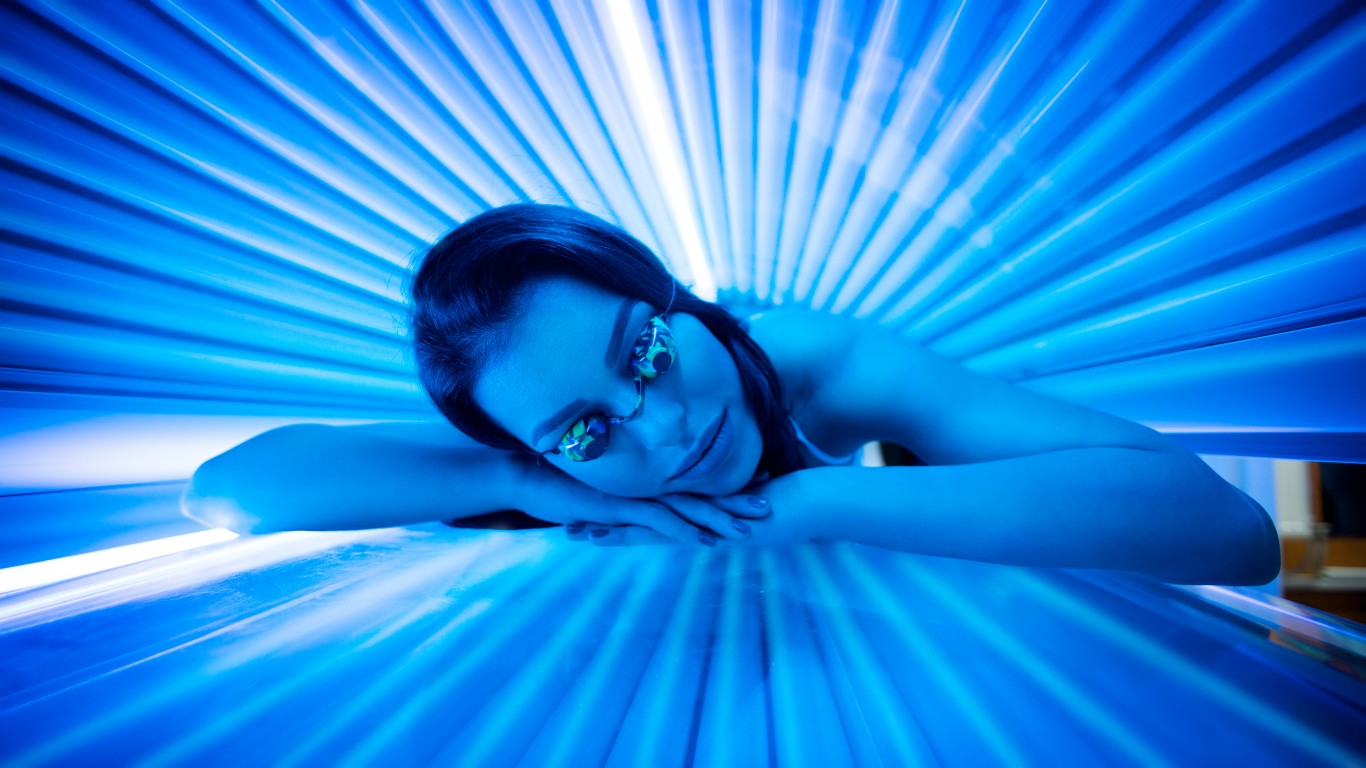
No one can escape the passage of time – the body will age. Yet, some people who are in their 50s look like they’re in their 30s. There are also plenty of those who are in their 20s but look like they’re in their 40s. Lucky genes aside, lifestyle choices and daily habits can accelerate or slow the aging process and cause the skin to either glow or look dull and old.
To compile a list of 27 assumed harmless habits that actually significantly damage the skin, 24/7 Tempo consulted board certified dermatologists and reviewed information from organizations specializing in skin health such as the International Dermal Institute.
How you treat your body may show on your skin. The skin is one of the first organs to show the signs of aging — wrinkles, fine lines, dryness, discoloration. Here is exactly what happens to your skin as you age.
Click here to see the habits that are making your skin look older
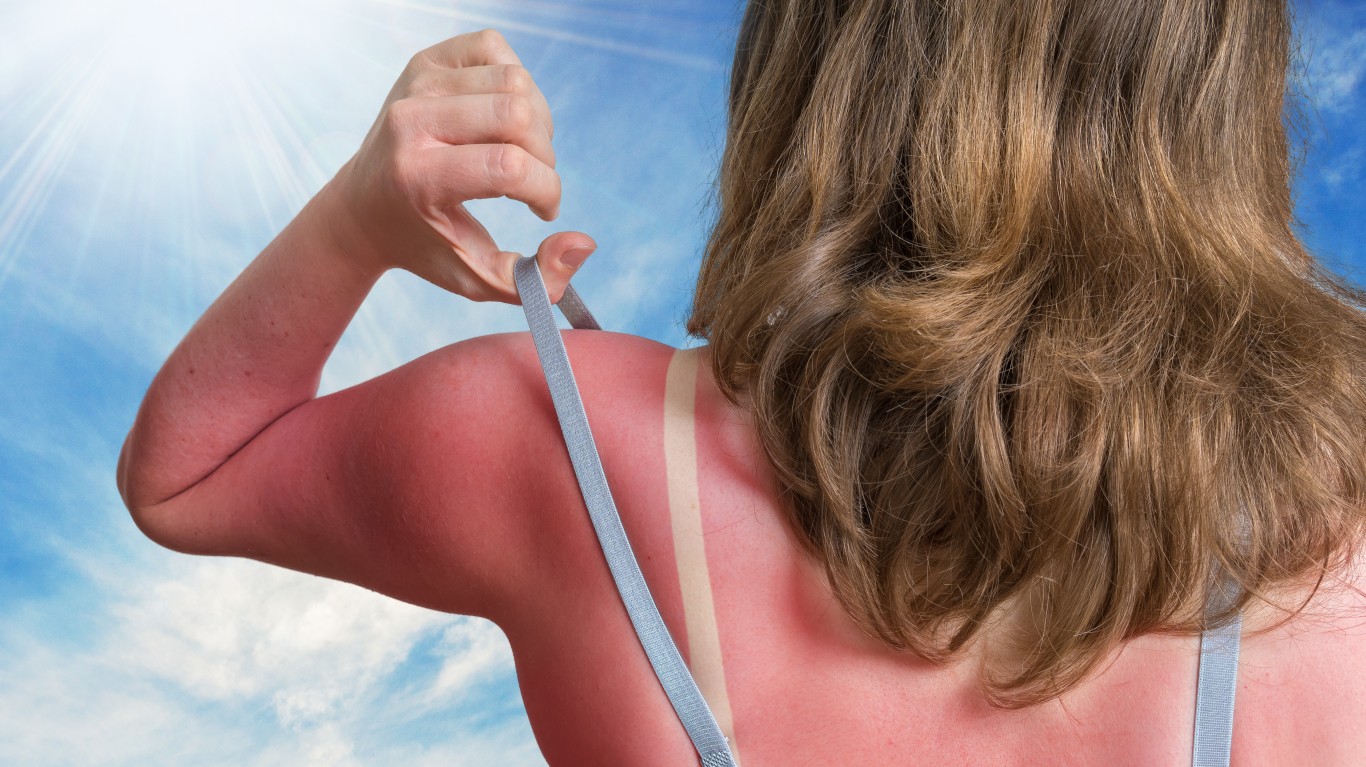
1. Not wearing sunscreen
Next time you forget to put on sunblock, go back and put it on. Sun protection is the best way to prevent premature aging. “It’s more important than everything else combined,” Intermountain Healthcare dermatologist Dr. Christopher English said. Ideally, you want mineral sunscreens with zinc and titanium because they block all harmful UV light and last longer. And they don’t cause allergic reactions, he noted.
Chemical sunscreens, which contain oxybenzone and other potentially harmful chemicals, often protect against UVB or UVA sunrays, not both. “But any sunscreen is better than none,” English said. “The benefits significantly outweigh the risks.”
[in-text-ad]

2. Applying sunscreen only in the summer
“Although the UV rays may be less intense in the winter, they are always present and pass through clouds,” said Dr. Heather Richmond, a dermatologist at the Dermatology and Laser Surgery Center in Houston.
Damage from UV radiation accumulates throughout our lifetime and causes gradual photoaging — wrinkles, loss of elasticity, brown spots, and uneven skin tone. “Additionally, UV radiation causes damage to the DNA in our skin cells and may ultimately result in skin cancer,” Richmond said.

3. Wearing sunglasses instead of a hat
Hats are always helpful for protection of the scalp, face, and neck from the sun. “However, sunglasses are recommended as well since, depending on the angle, the eyes or areas around the eyes may not be in consistent shade, depending on which hat is used,” Richmond said. “In addition to protecting against fine lines around the eyes, sunglasses also protect the eye itself from sun damage, which can lead to [vision] changes,” she added.
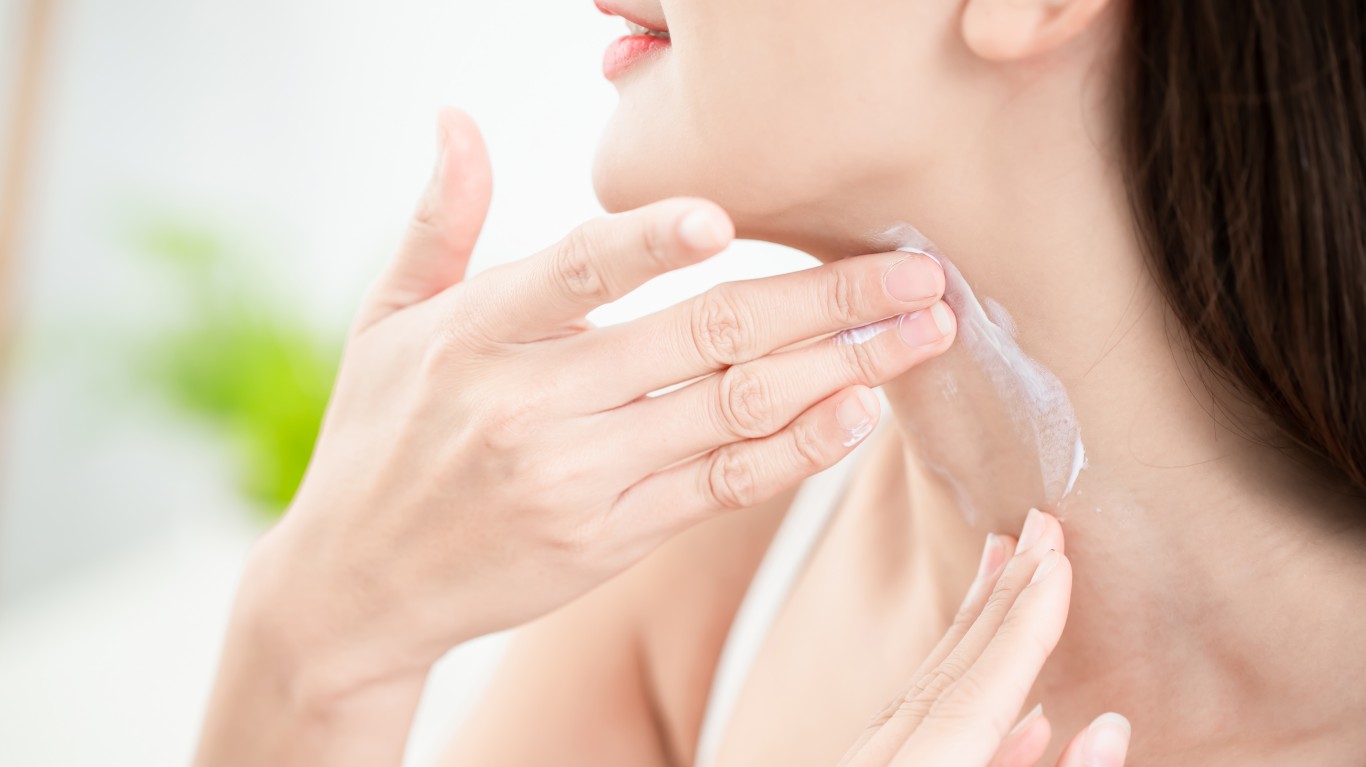
4. Thinking you don’t need sunscreen everywhere
“I think the most important places that people forget to apply sunscreen are the ears and the back of the neck,” Richmond said. These are extremely common sites for skin cancer, particularly in people who don’t have hair covering naturally these areas, she noted. For daily sunscreen and anti-aging prevention, most people are good at applying it to their faces, but they should also think about including the neck, chest, hands, and back of arms because these areas are often neglected and can show photoaging (premature aging of the skin caused by UV rays) even when the face looks youthful, Richmond explained.
[in-text-ad-2]
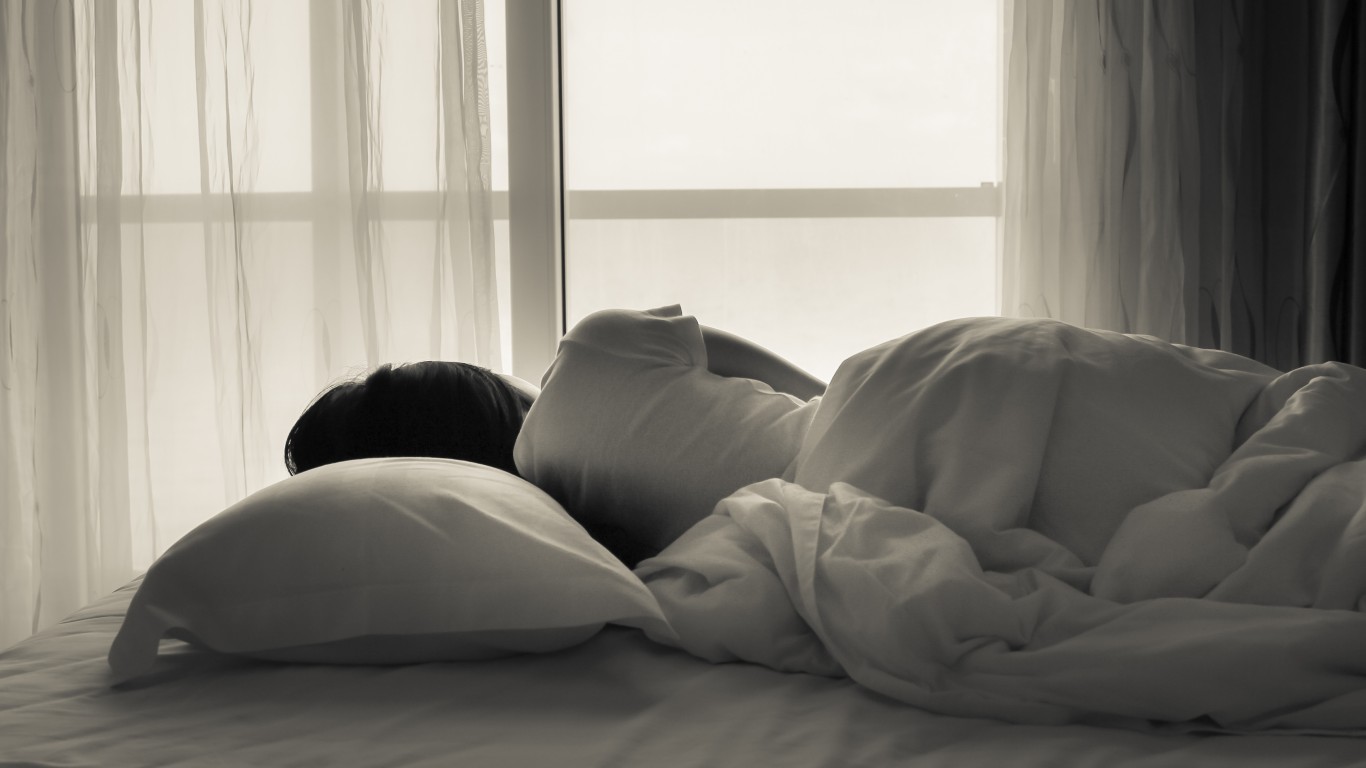
5. Sleeping on your side
About 41% of people sleep in the so-called fetal position — on their side with their legs curled up — and another 15% sleep on their side with legs not curled, according to the National Sleep Foundation. It’s a very common position.
But there is a problem with this position. “People commonly have deeper wrinkles on the side of their face that they sleep on if they are side or stomach sleepers,” Richmond said. This is a result of pressure over time. “Generally, it is a mild difference, and not dramatic enough that I would tell people to avoid certain sleeping positions.” However, if patients are very bothered by a particular asymmetry, it’s reasonable to try to avoid sleeping face down on that side, which may provide some modest benefit over time, she noted.

6. Stress
The evidence for a link between stress and aging of the skin is not great, English said. Stress can exacerbate many existing problems, especially in older people, but more research needs to be done. One connection, between acne breakouts caused by anxiety, is well-known. When the body is stressed it produces androgens, a type of hormone, that trigger the skin’s oil glands and hair follicles, leading to acne.
Stress can make the skin more sensitive and can also make it harder for skin problems to heal. Cortisol is another hormone that gets released when the body is under stress, and it signals the skin’s glands to make more oil. Oily skin tends to be more prone to itching, rashes, and other issues.
[in-text-ad]

7. Using tanning booths
Many people decide to “prepare” their skin for the coming summer season by going for a few tanning sessions, but this is a terrible idea. “This is the absolute worst UV exposure,” English said. The quick and intense burst of UV light the skin is exposed to has the highest association with melanoma, the most dangerous type of skin cancer, he noted.
Richmond added that she sees much more melanoma and basal cell carcinoma in young women who have a history of tanning, some in their 20s and 30s. In addition to increasing the risk of skin cancer, tanning dramatically accelerates the aging of the skin, resulting in earlier wrinkles, uneven skin tone, persistent redness, and brown spots, she explained.
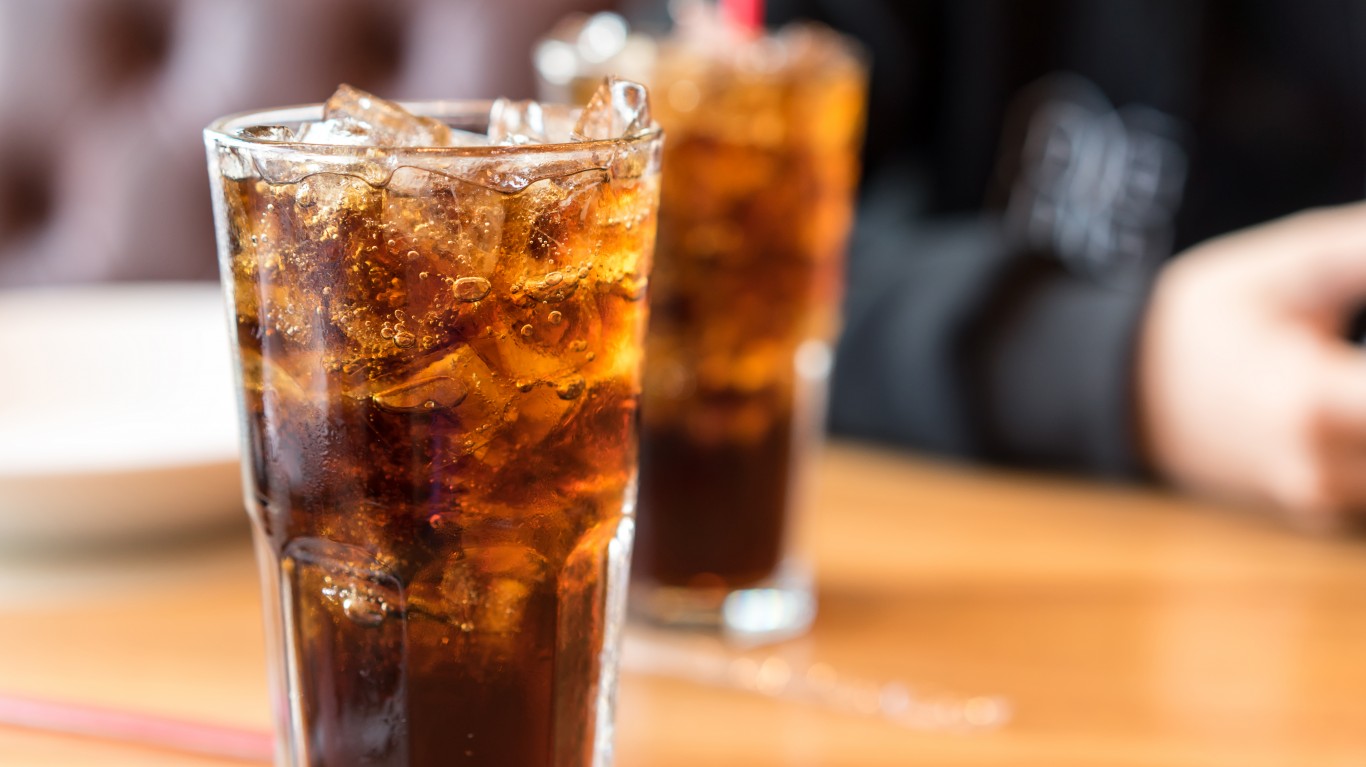
8. Consuming too much sugar
There is some data that suggest high-sugar diet contributes to premature aging, but there is no proven connection, English said. Excessive sugar may dehydrate body cells, including skin cells.
Wrinkles can occur as a result of dehydration, and the best way to stay hydrated is to drink a lot of water. As a result of dehydration, loss of collagen and elasticity can lead to sagging skin and loss of hyaluronic acid, both of which can hurt the skin’s ability to retain water. This makes fine lines and skin scaling even more apparent.
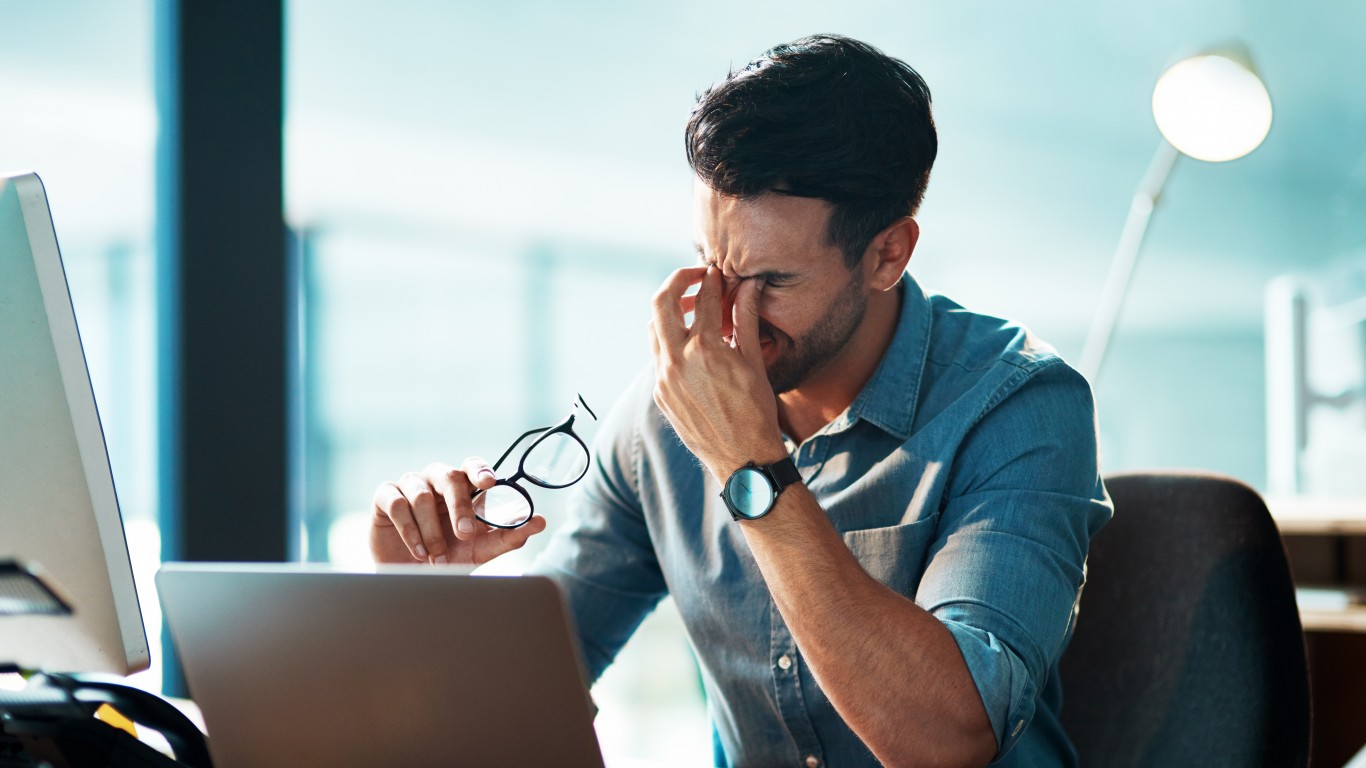
9. Rubbing your eyes
Rubbing one’s eyes is often a reaction to being tired. It’s almost instinctive. However, as is the case with most habits, a problem occurs when it’s chronic. The issue with rubbing your eyes all the time is the sensitivity of the skin around them. It’s one of the places where aging signs first appear. The pressure applied to the skin can break small blood vessels, leading to the formation of dark circles and drooping eyelids.
[in-text-ad-2]
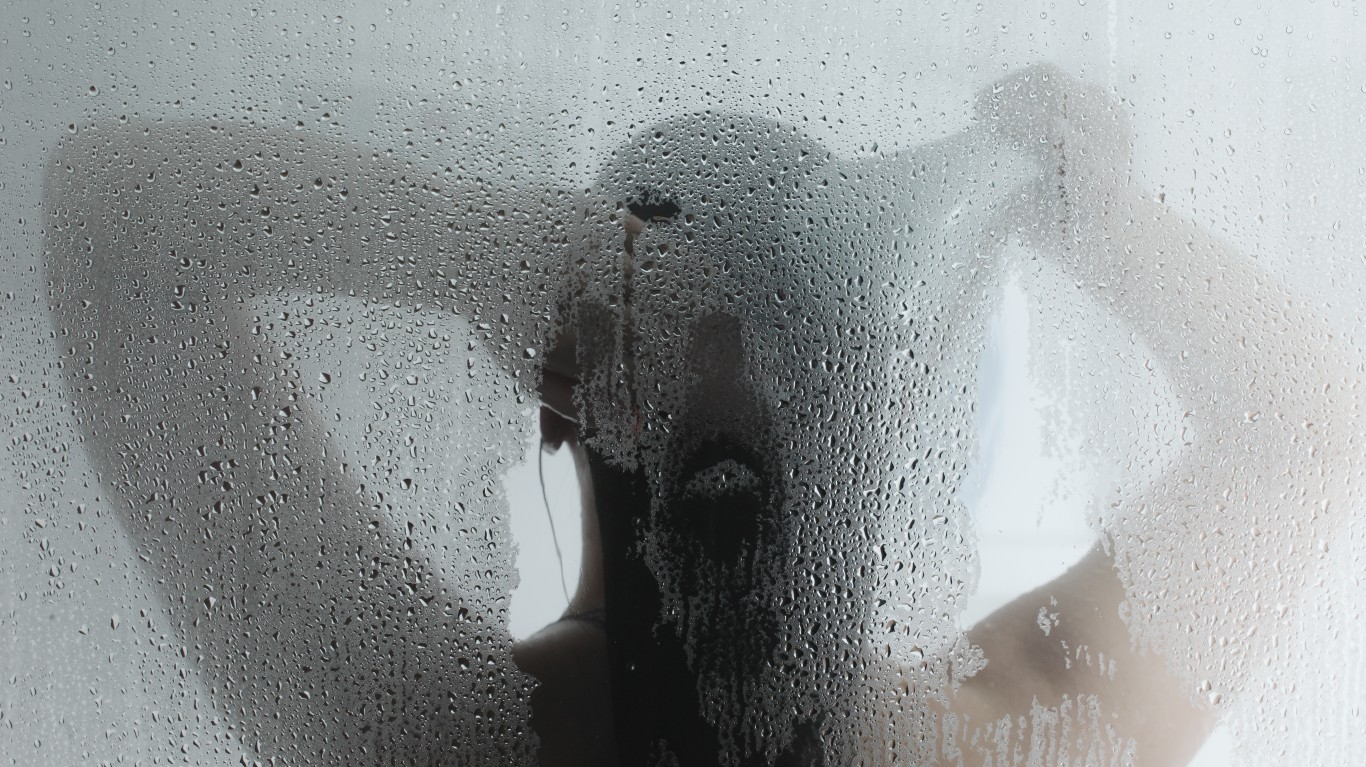
10. Taking hot showers
Hot showers, especially in the winter, feel great. But the hot water removes natural oils and moisture from the skin. Dry skin can ultimately result in itchiness, redness, scaling, and can make eczema worse. Dermatologists recommend short showers with lukewarm water.
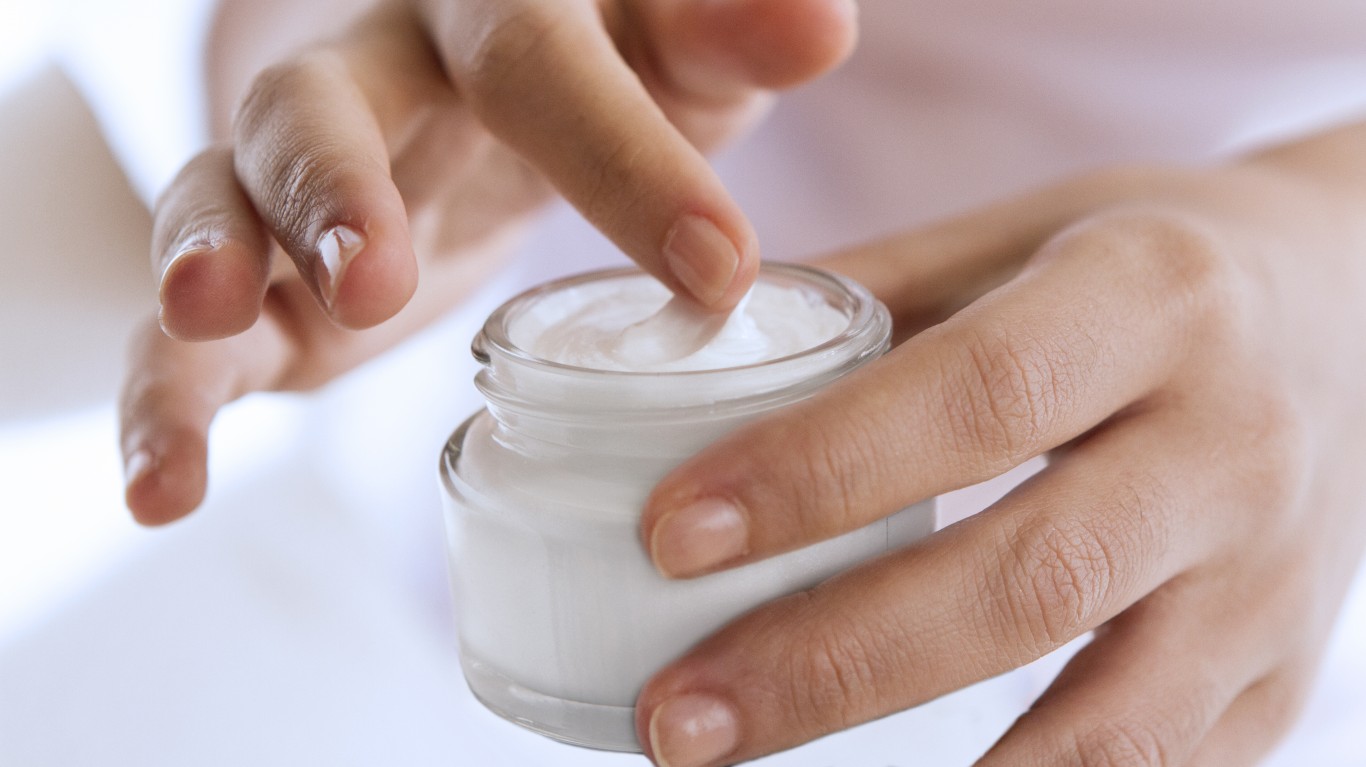
11. Applying lotions, instead of creams
The skin’s natural oils act as barriers and keep water in, preventing the skin from dehydrating. Creams are far superior to lotions and do a much better job at protecting the skin because creams have more oils and lotions are mostly water, English explained.
[in-text-ad]
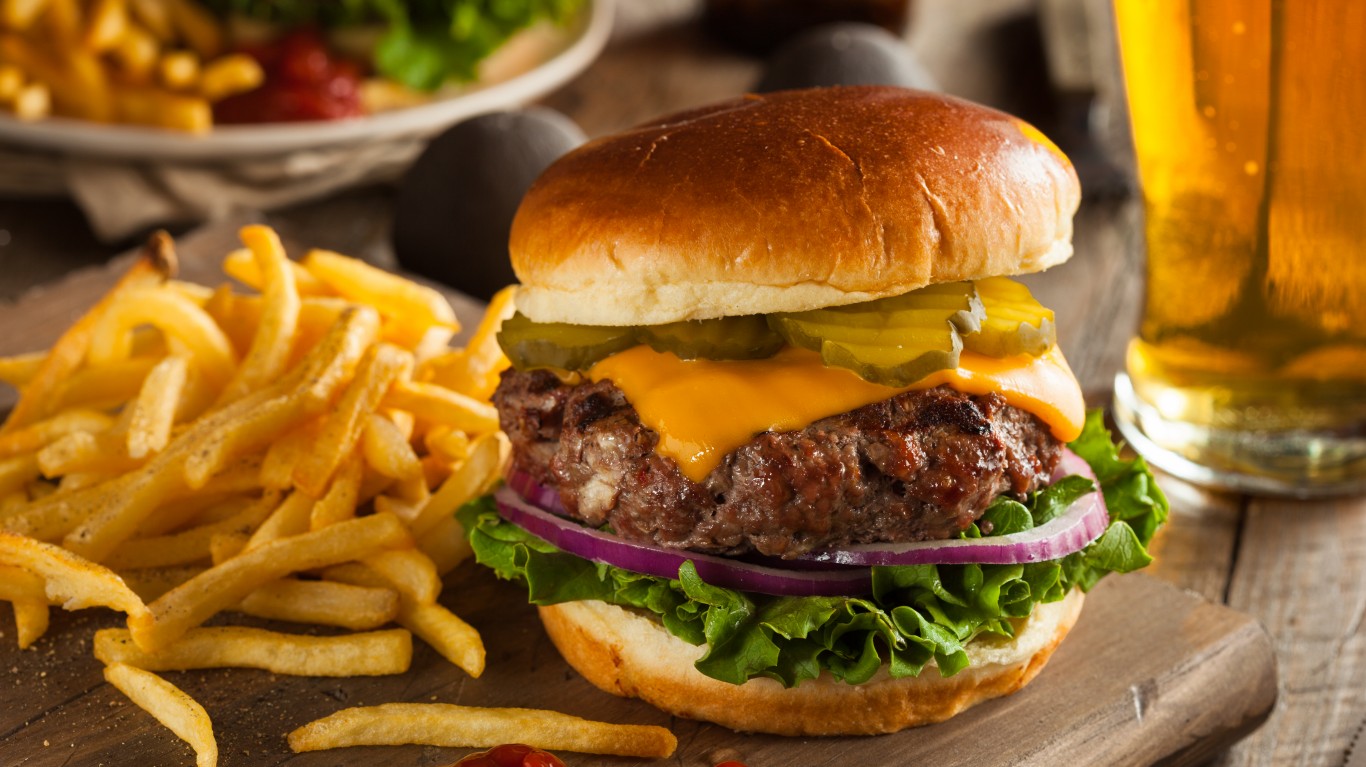
12. Avoiding fatty foods
You may be thinking that you’re doing your body a favor by not consuming fat, but this is not entirely true. You should avoid trans fats, which can wreak havoc on your body, but your body needs healthy fats, especially essential fatty acids (EFAs).
Certain foods are rich in essential fatty acids, including fish, nuts, avocado, eggs, chia seeds, olive oil, and some fortified foods. Omega-3s and omega-6s fatty acids can help support cell health. They help produce the skin’s natural oil, which keeps it hydrated and glowing.
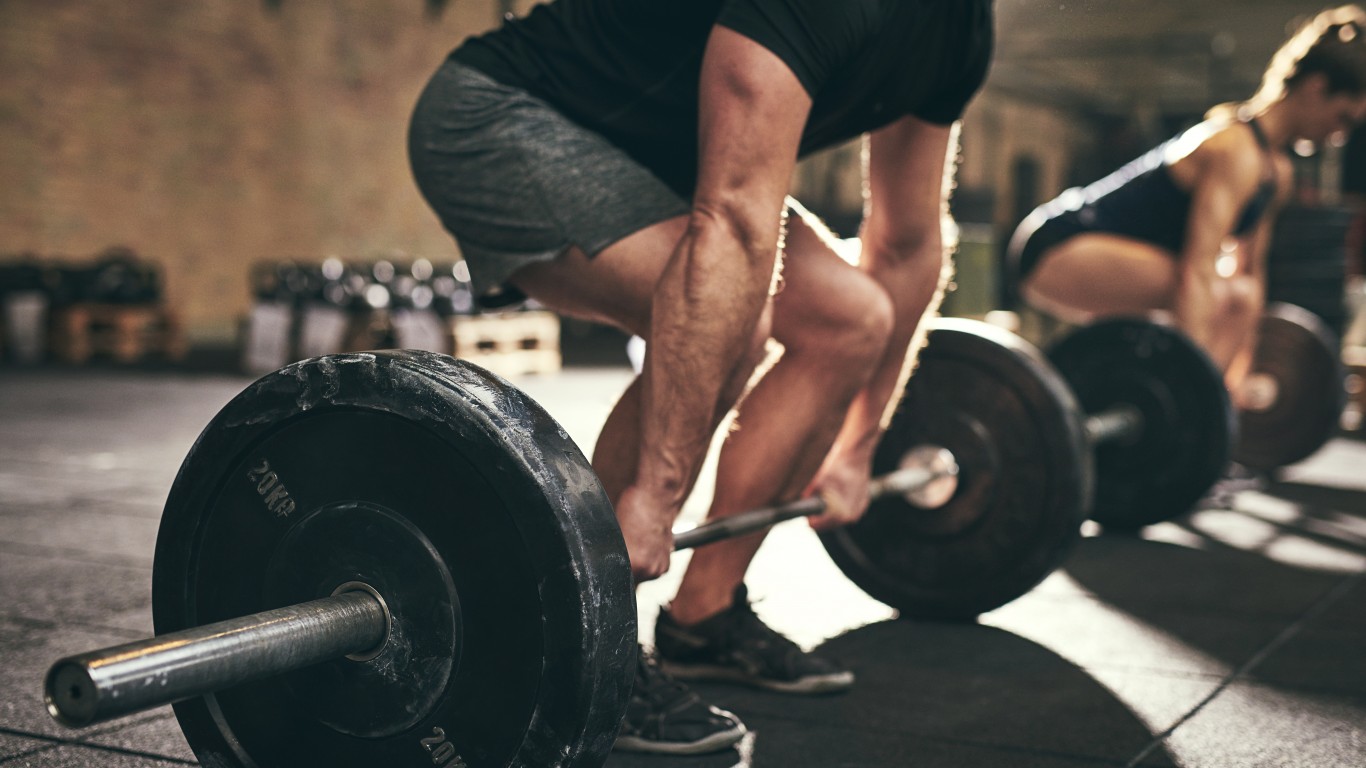
13. Exercising too much
No one is arguing that exercise is bad for you. Research has shown that a lifetime of regular exercise can actually slow down aging. Overdoing it, however, doesn’t have the same effect. Working out hard for too long puts the body in a stress mode. Stress makes the body release cortisol, which may break down elastin and collagen, two major proteins in the skin that keep it healthy, tight, and plump. Lack of these proteins can accelerate aging and make the skin dry and wrinkly.
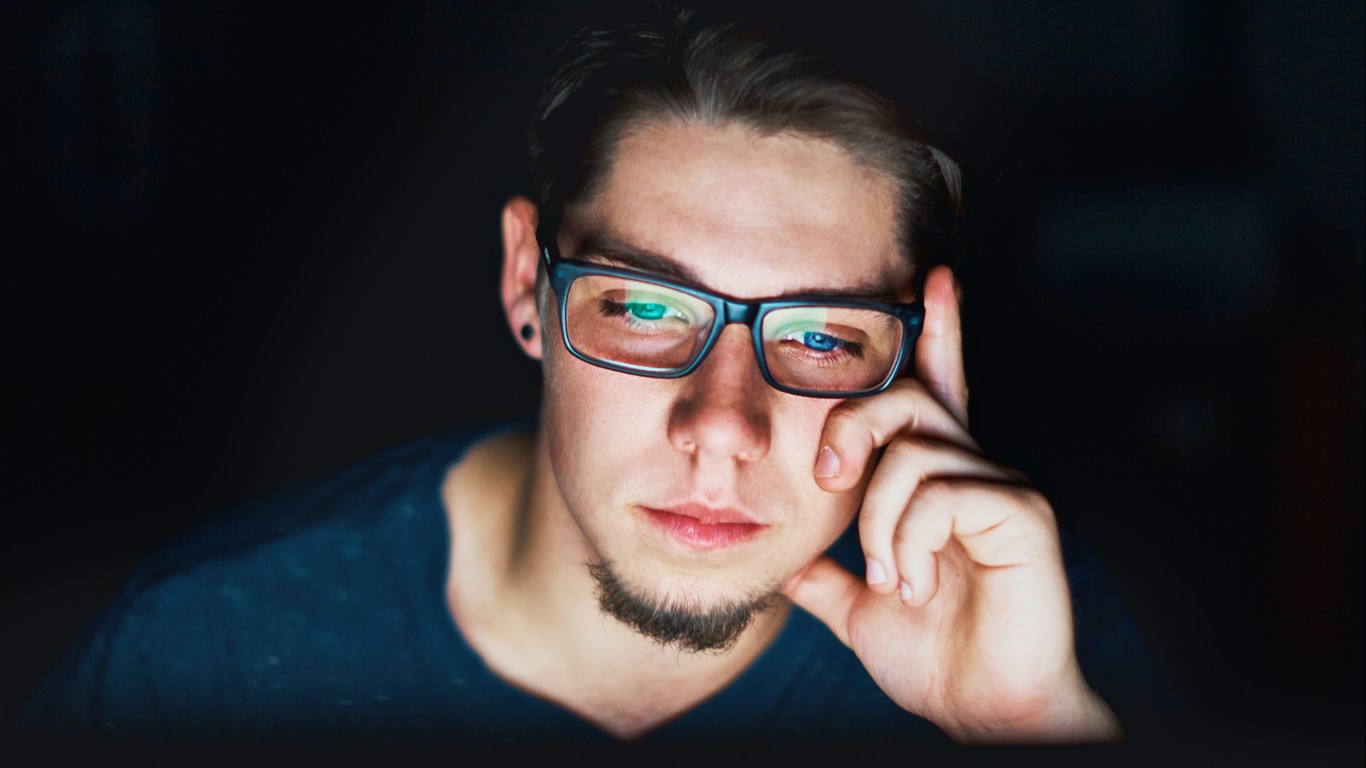
14. Staring at electronic devices
Americans now spend more time on their mobile devices than watching TV. You may not have thought about it, but this affects your skin. “Although the majority of skin damage comes from UV light, we now know that other wavelengths on the electromagnetic spectrum can contribute to breakdown of collagen and elastin fibers and result in more rapid aging,” Richmond said.
These wavelengths include infrared light and high energy visible light (HEV), which is in the blue/violet colors. The visible light wavelengths are emitted from devices such as phones and computers, and they may theoretically augment wrinkles over long periods of cumulative exposure, Richmond explained. HEV may also flare photosensitive skin conditions such as melasma or lupus, she added.
[in-text-ad-2]
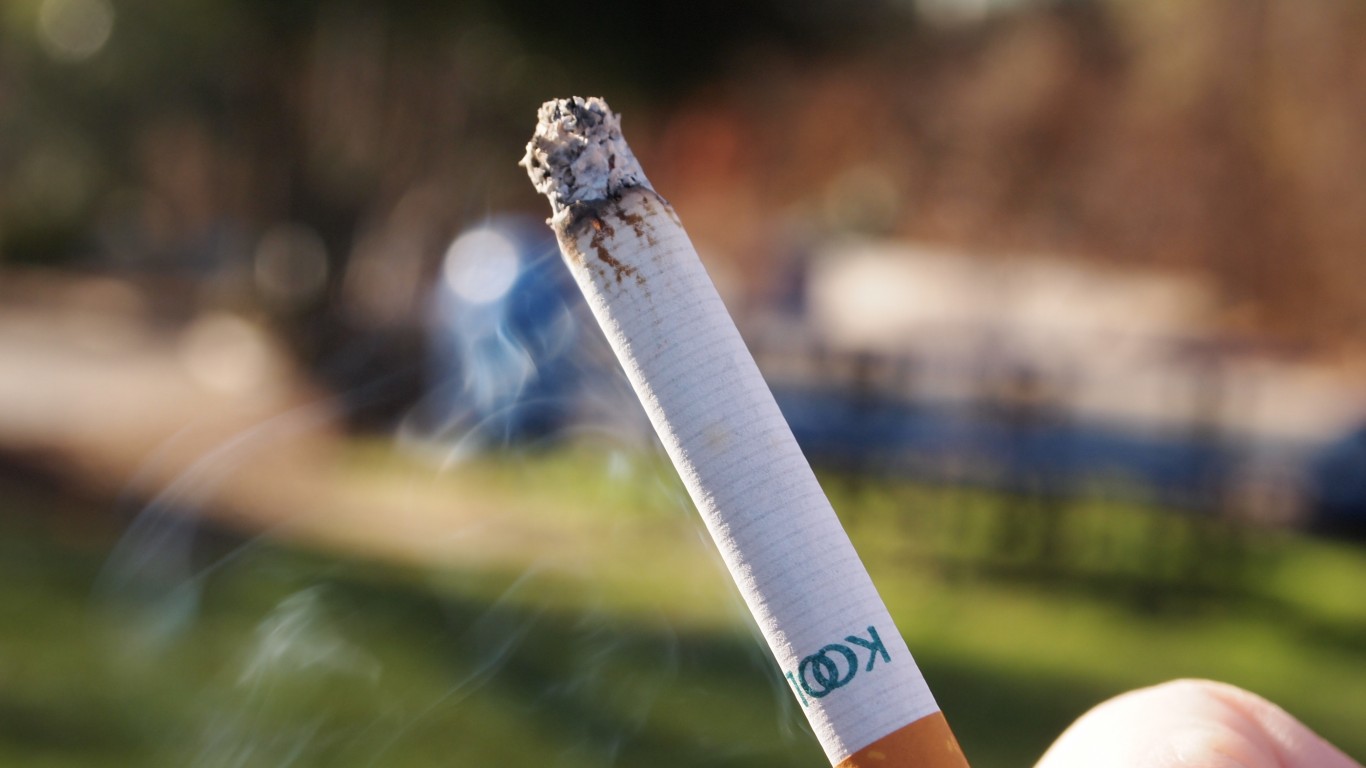
15. Smoking only a little bit
Everybody knows that smoking is terrible for you because of the numerous negative effects it has on the body, many of which are immediate. In general, smoking increases the risk of several serious diseases. Some people may say, however, that they are only “social smokers.” But your skin doesn’t care. “Smoking is seriously aging to the skin,” Richmond said.
We all know about smokers’ lines around the lips, but that’s not all. The carbon monoxide in cigarettes replaces the oxygen in your skin, and nicotine reduces blood circulation, leaving the skin dry, Richmond explained.

16. Frowning too much
Frowning, squinting, or any facial expression for that matter, contracts the muscles under the skin, forming a groove. Repetitive facial expressions may eventually lead to permanent fine lines because the skin loses flexibility and the muscles don’t go back in place.
[in-text-ad]
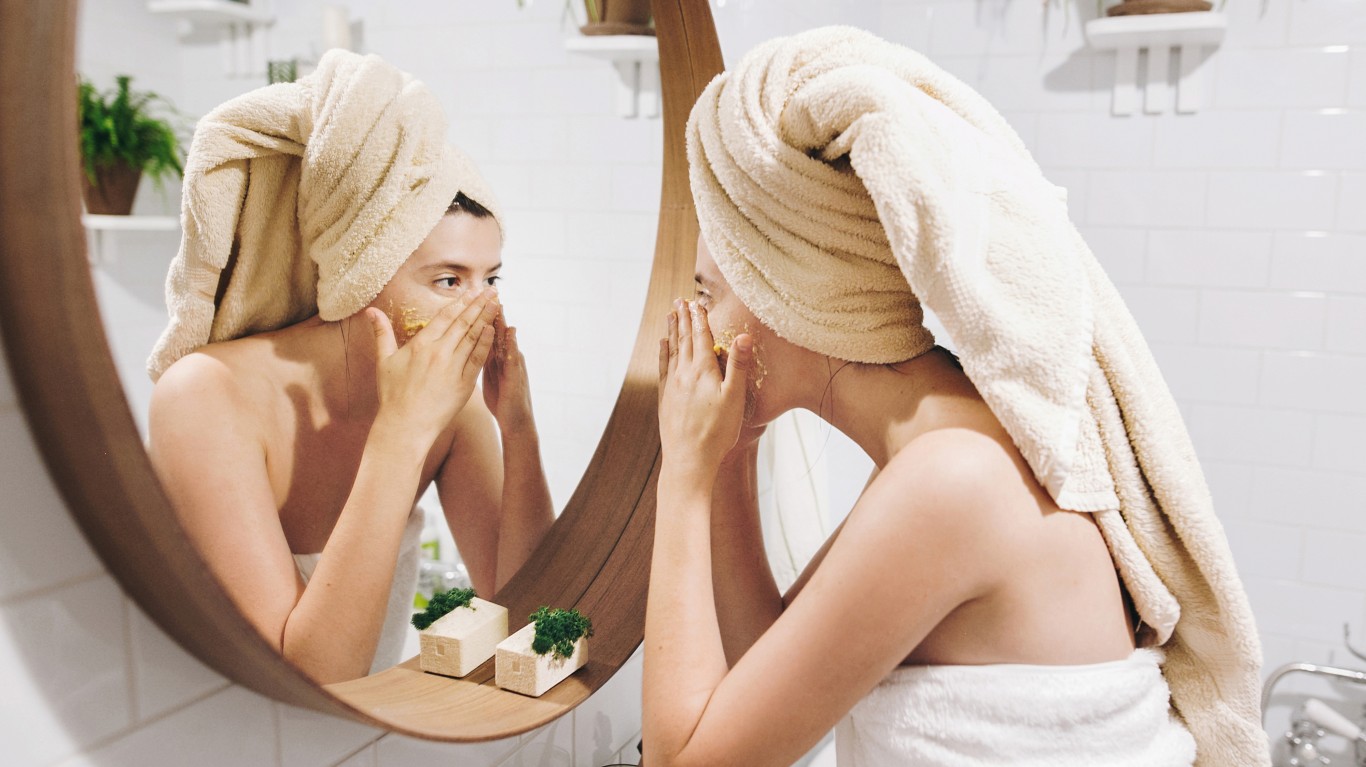
17. Scrubbing your skin
“Scrubbing doesn’t really accomplish what people think it does,” English said. While it removes some microorganisms from the skin and pores, it is far more irritating to the skin than it is helpful, he explained. Like the effect hot showers can have, excessive scrubbing also removes beneficial protective oils the skin naturally produces.
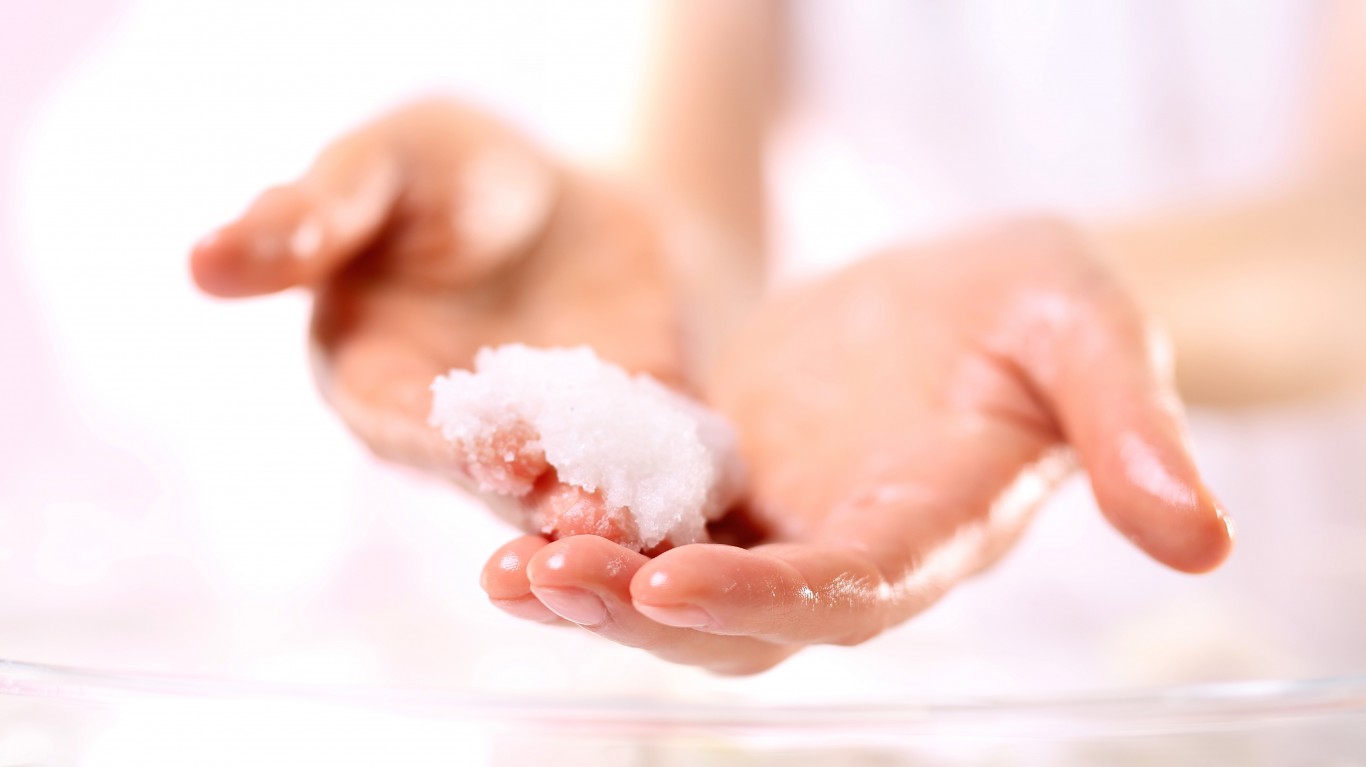
18. Using exfoliators too often
“Moisturizers should be used at least once daily to both the face and body, especially after washing,” said Dr. Jason Miller of Schweiger Dermatology Group in New Jersey. This helps maintain the natural texture and softness of the skin.
Exfoliators are less essential and can be very irritating if overused, he added. “[Exfoliators] can be used two to three times per week for those with normal skin types but should be limited to once weekly in those with sensitive skin.”

19. Keeping makeup on all night
Wearing makeup overnight can lead to eye irritation, styes, infections, lash breakage, acne, and dry skin, among other problems, Richmond noted. Free radicals can be trapped by makeup, leading to premature aging. “It is always best to gently but thoroughly wash off your makeup before bed, and sleep with clean, moisturized skin,” she said. Even better, apply retinol cream before bed to help repair fine lines and wrinkles and combat sun damage.
[in-text-ad-2]
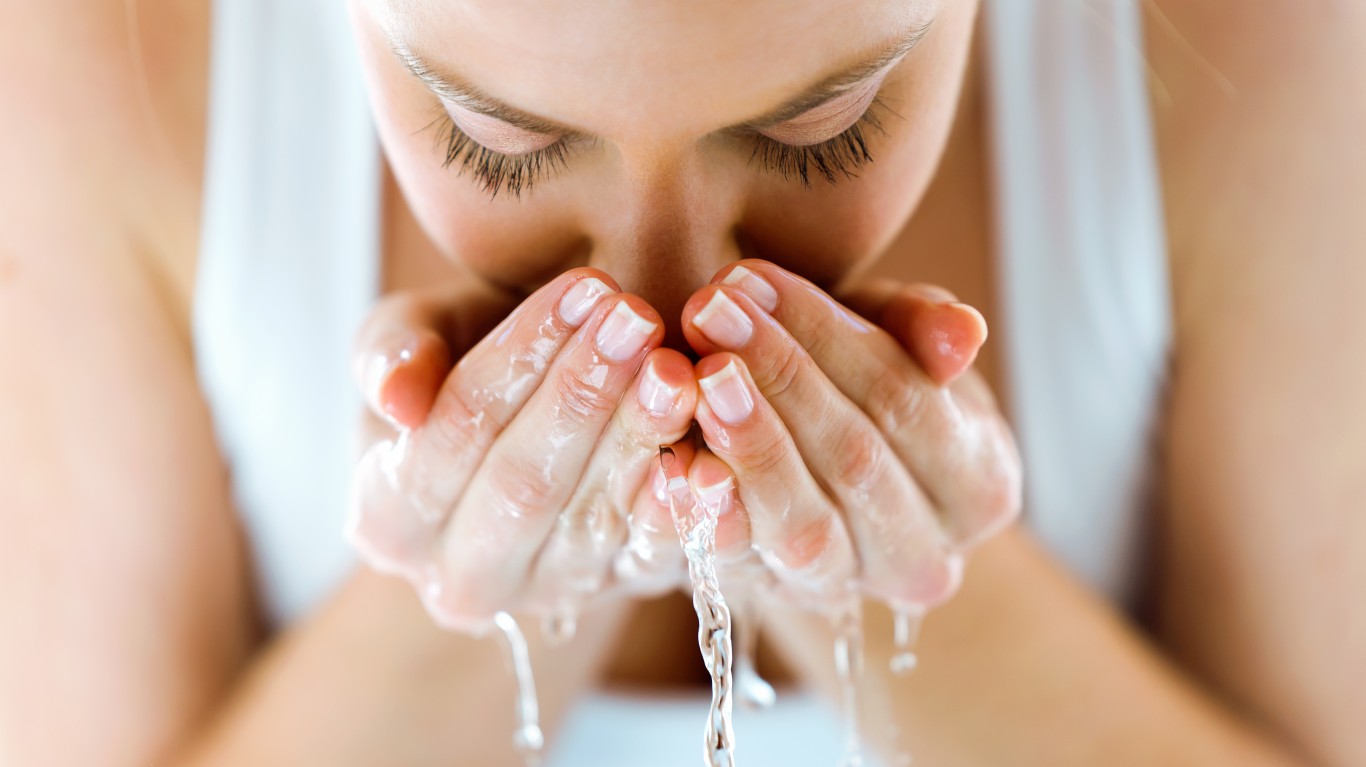
20. Washing your face several times a day
Some people can tolerate excessive washing, English said. Soap will strip the natural oils from the skin and lead to dryness. “I’d stick to washing the face twice a day and after getting sweaty,” he added. Sweat can get dirt and dust trapped under the skin and exacerbate the clogging of the pores.
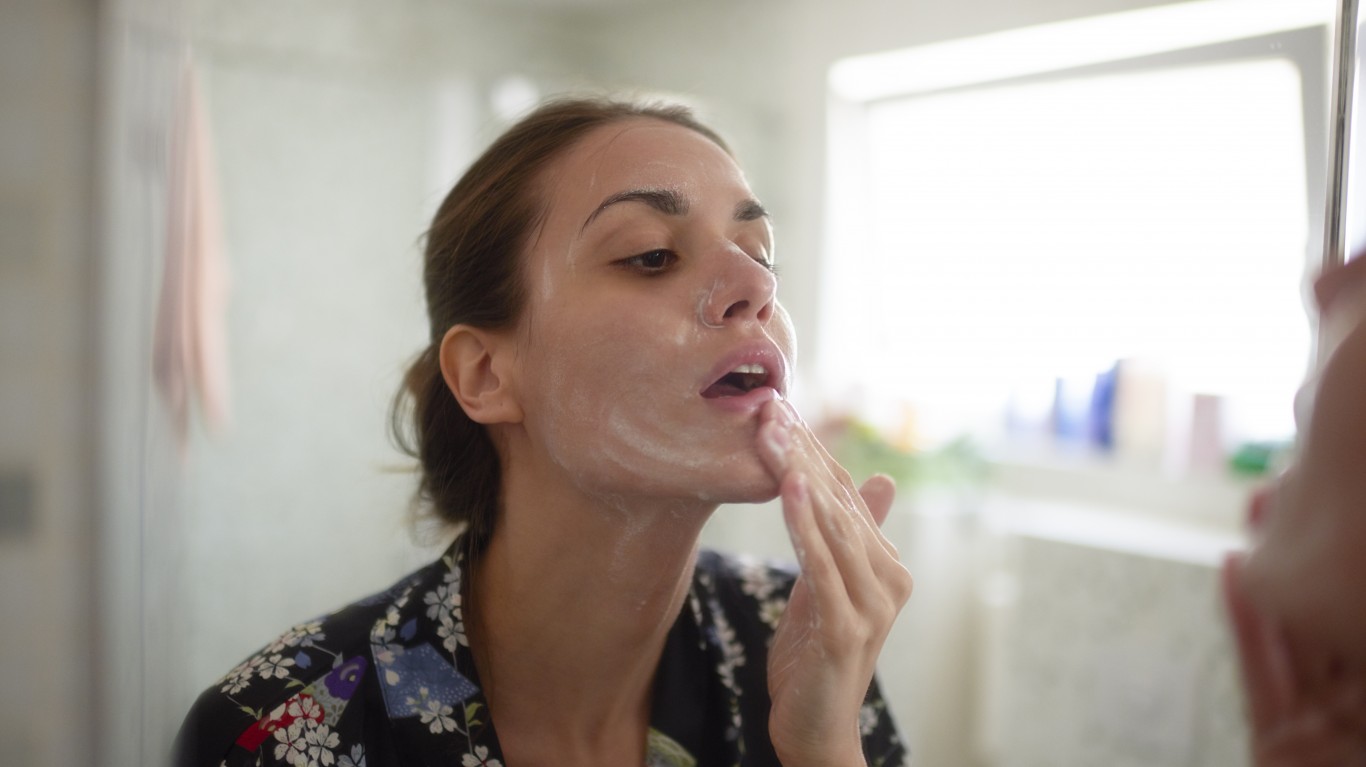
21. Using the wrong soap
The right soap for one’s skin depends on age and baseline oil production, according to Richmond. People with oily skin will need a foaming cleanser to remove the excess oil and should be diligent about washing their face twice daily to prevent acne and an oily sheen, she noted. “More than twice daily is probably not necessary and may dry out even oily skin.”
[in-text-ad]
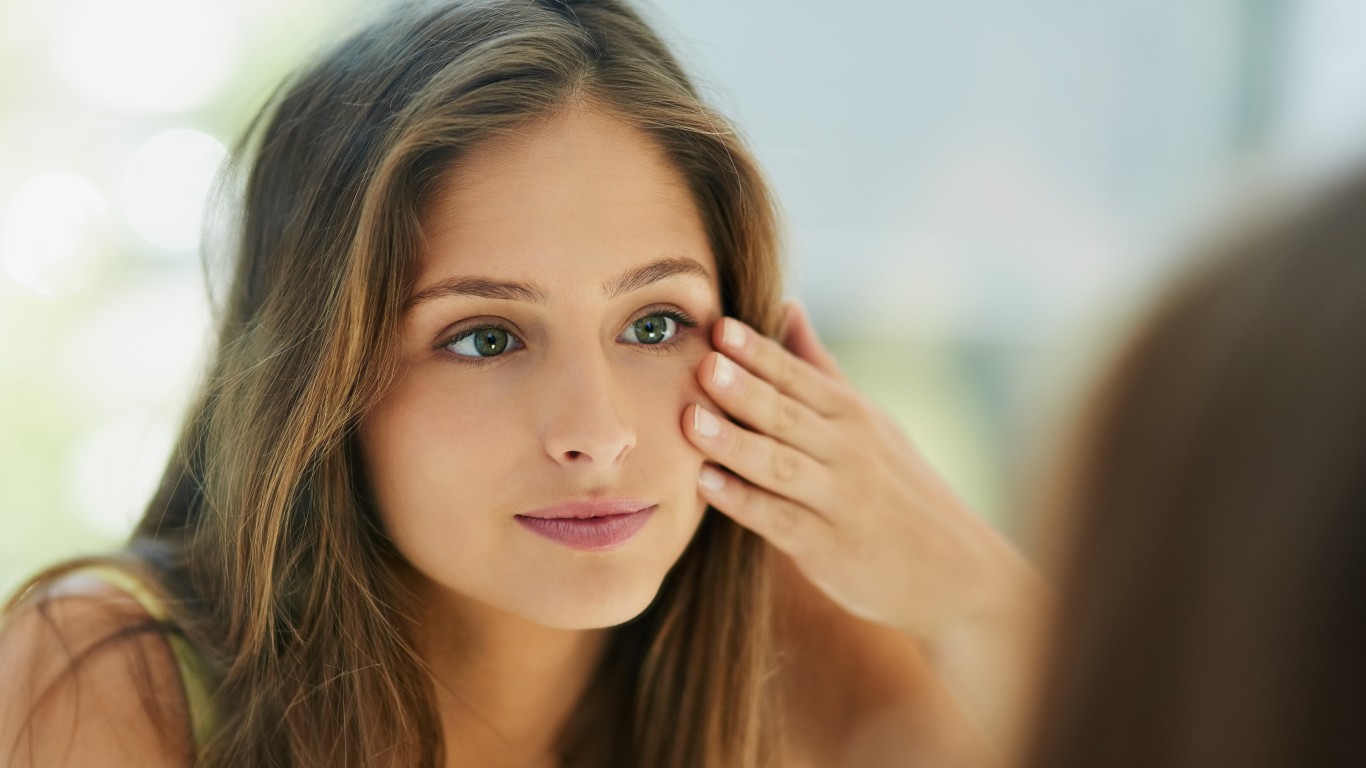
22. Touching your face too much
People regularly touch or squeeze their pimples, sometimes without even realizing it, Miller said. But this can leave dark spots or even scars. “I encourage my patients to try to be self aware and redirect their picking,” he said. “One simple technique is to put a rubber band on your wrist and snap it every time you feel like picking.”
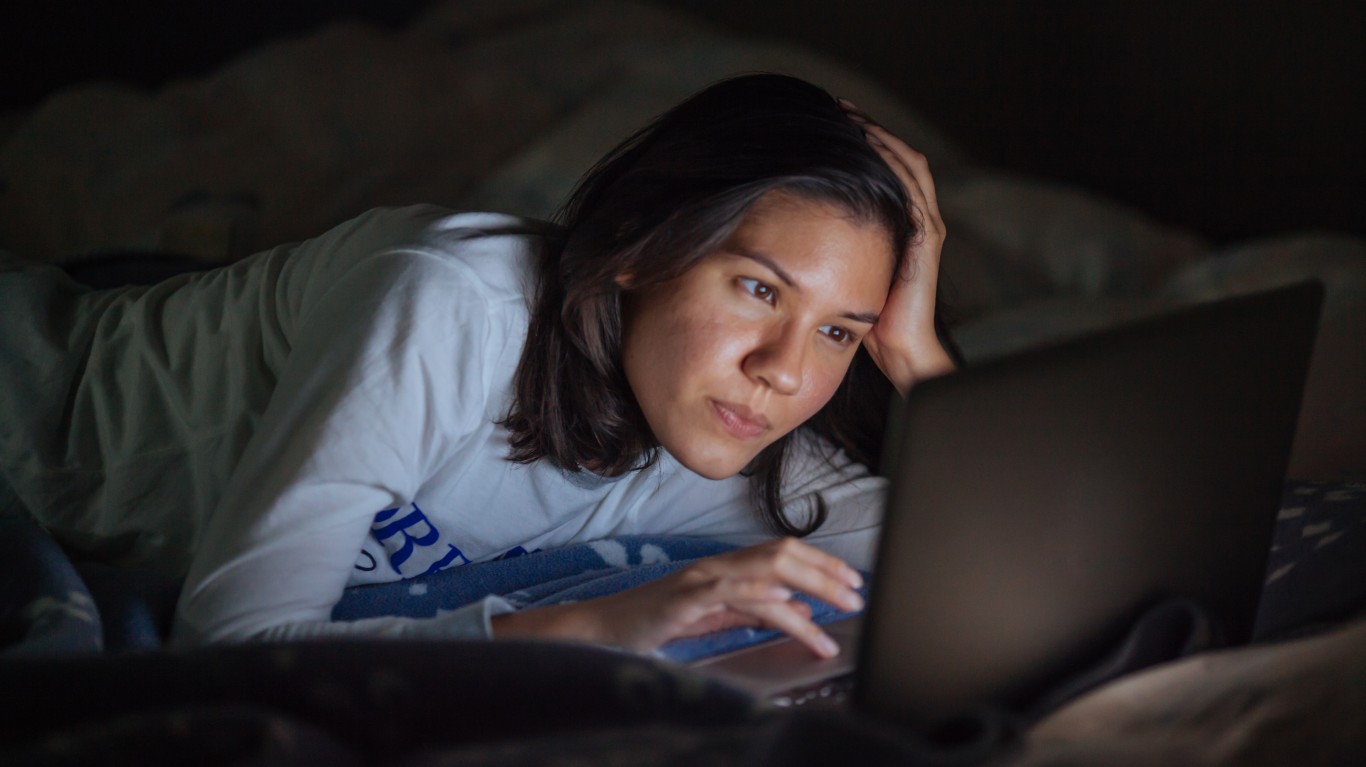
23. Staying up all night
“When we sleep our body repairs/replaces collagen, hence lack of sleep can contribute to aging,” Miller said. “Poor sleep can cause abnormal levels of the stress hormone cortisol, which can also affect skin health. It worsens inflammatory skin conditions such as acne and eczema,” Richmond added.
Sleep deprivation also reduces the production of growth hormone, thereby lowering the efficacy of cellular repair mechanisms and accelerating the aging process. “Worsening of dark circles is another telltale sign of lack of sleep as a result of dilation of the small blood vessels under the eyes, leading to purplish discoloration and puffiness,” Richmond added.
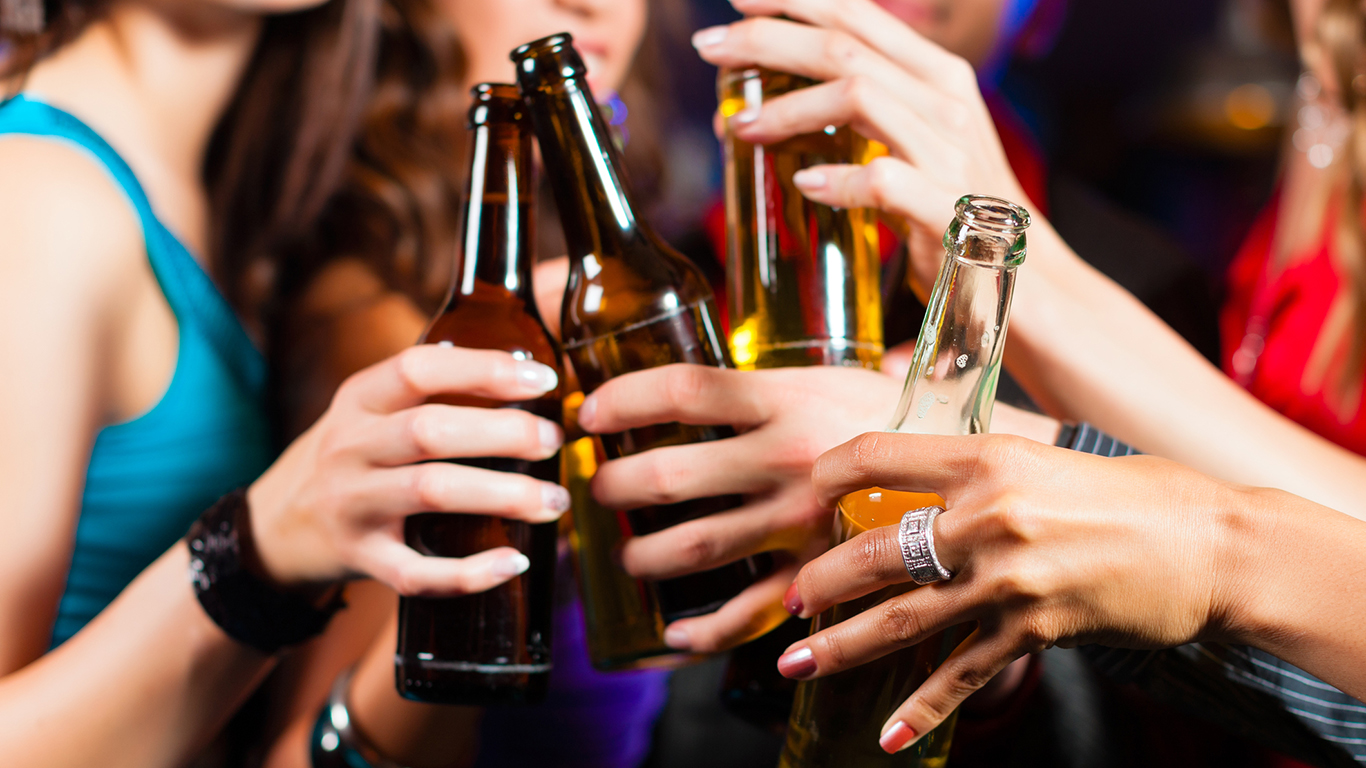
24. Excessive alcohol consumption
A study of more than 11,000 people showed a correlation between high alcohol consumption and visible signs of premature aging. More specifically, drinking too much increases the risk of developing arcus corneae (a white or gray half-circle on your eye) and earlobe crease (a line or a wrinkle in the middle of the earlobe). Alcohol also causes dehydration, which is a major contributor to premature aging.
[in-text-ad-2]
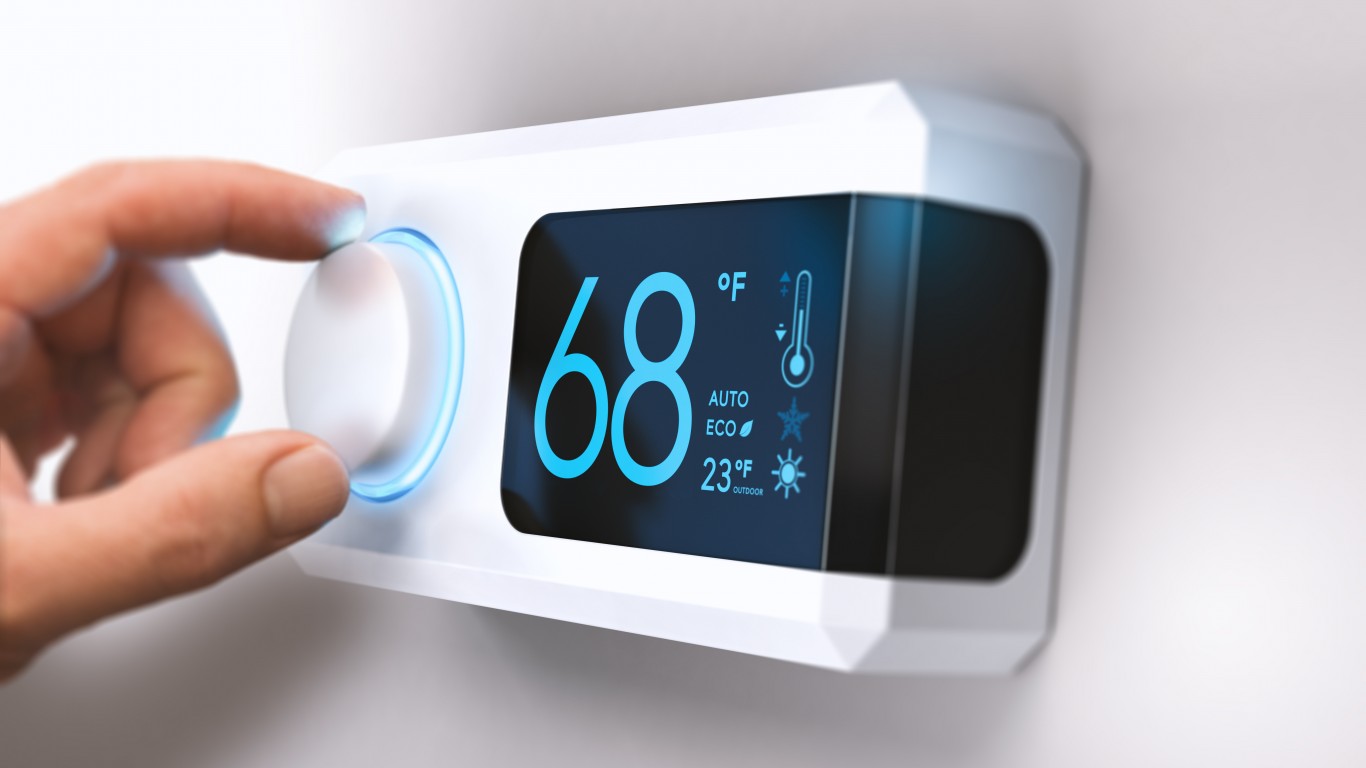
25. Cranking up the heat
Increasing a room’s temperature dries the air by sucking out the moisture. Over time, this can lead to dry and itchy skin. According to one study, even a 30% difference in relative humidity can affect skin properties in a short time. In the study participants, there is a significant decrease in skin elasticity and significant increases in wrinkles after exposure to dry air. Bedroom temperatures should be between 60 and 67 degrees Fahrenheit, according to the National Sleep Foundation, and the World Health Organization recommends a temperature of 69.8 degrees Fahrenheit for the living room and 64.4 degrees Fahrenheit for other occupied rooms.
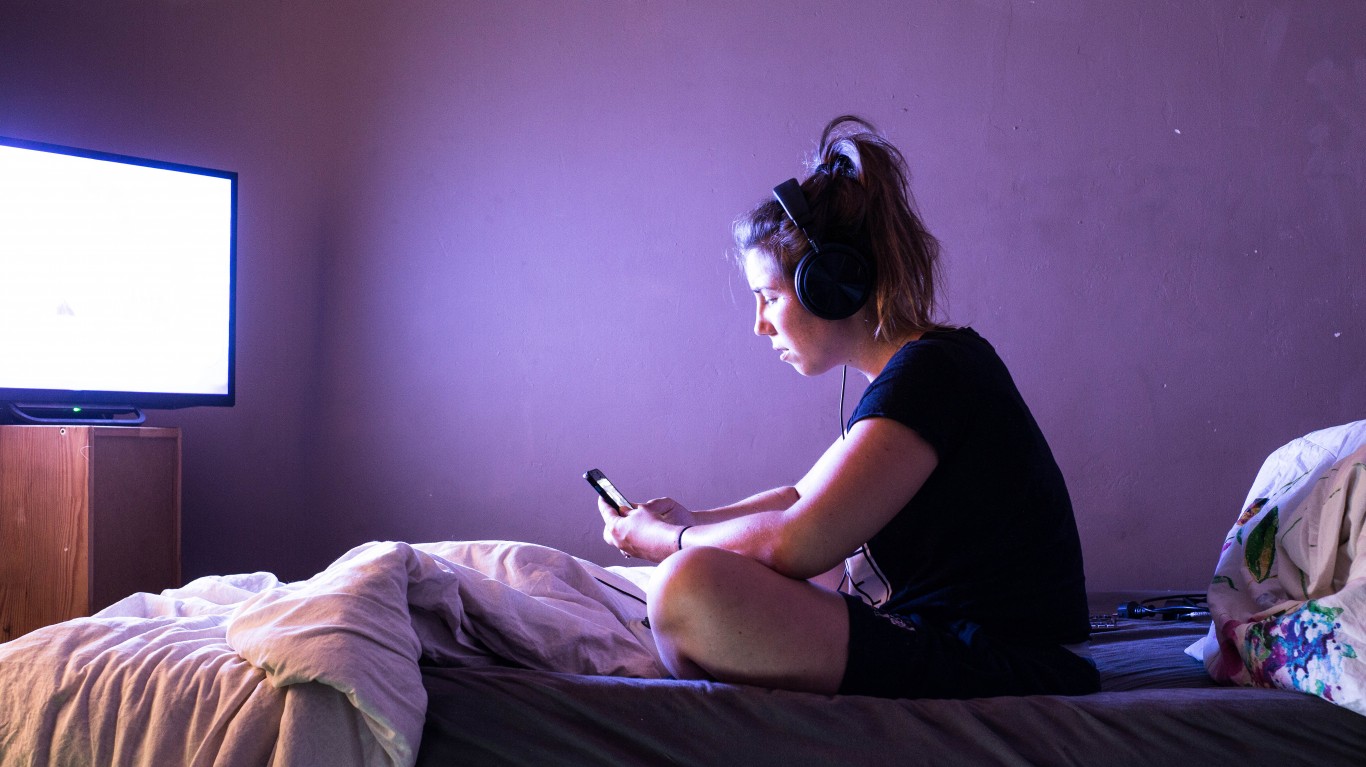
26. Having too much screen time
The blue light emitted by your laptop, phone, or TV is not only preventing you from falling asleep, it may also be damaging your skin. This high-energy visible light may cause a lot of skin damage, according to some research. It decreases carotenoids in the skin, leading to an increase of free radicals and degradation of the epidermal antioxidants. Long exposure to blue light may speed up the oxidation process, causing inflammation and damaging the skin, making it prone to lines and wrinkles.
[in-text-ad]
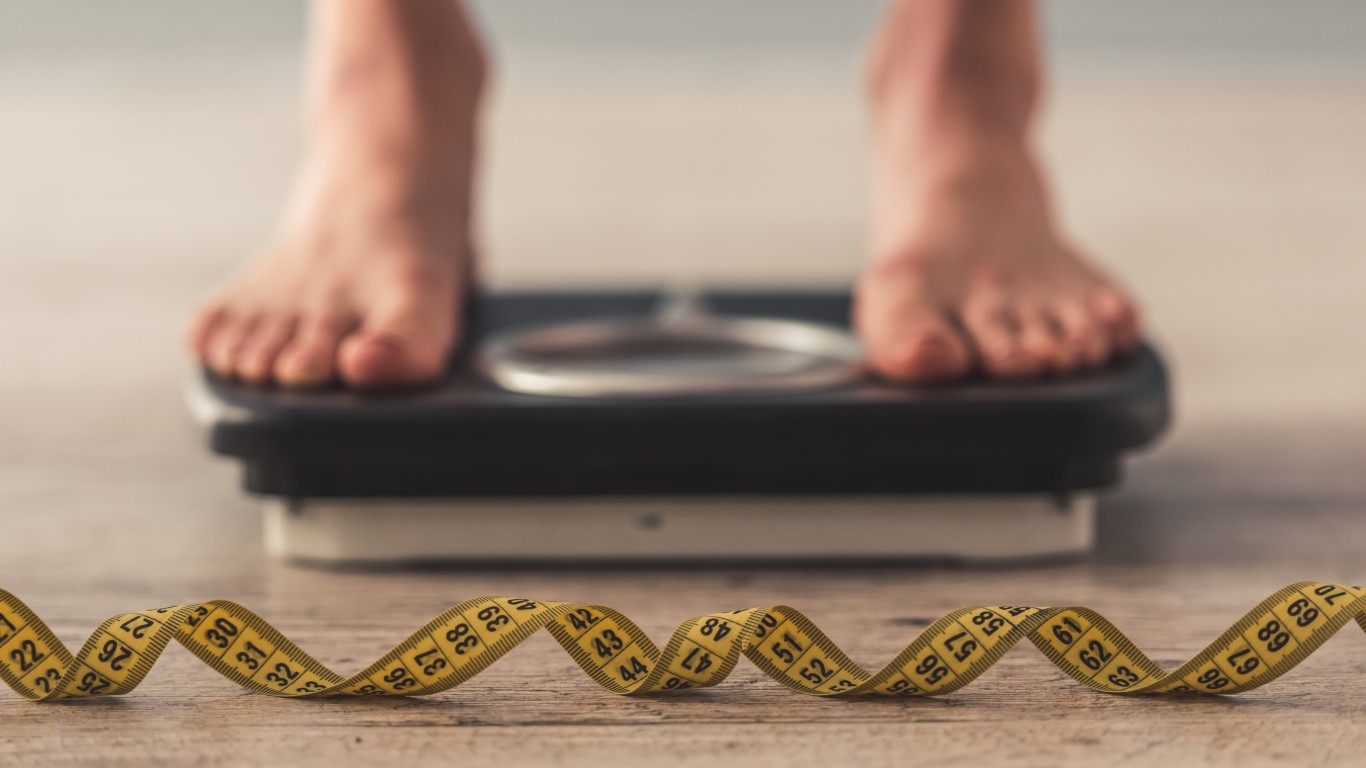
27. Starving
Extreme limited-nutrition diets do more harm than good. While some weight loss may be a desired result, rapid weight loss may come at a steep price, including dehydration, malnutrition, electrolyte imbalances, and muscle loss. When basic nutritional requirements are not met, the first organ to suffer is the skin. Vitamins and minerals have antioxidant properties, helping the skin stay healthy and youthful.
The Average American Has No Idea How Much Money You Can Make Today (Sponsor)
The last few years made people forget how much banks and CD’s can pay. Meanwhile, interest rates have spiked and many can afford to pay you much more, but most are keeping yields low and hoping you won’t notice.
But there is good news. To win qualified customers, some accounts are paying almost 10x the national average! That’s an incredible way to keep your money safe and earn more at the same time. Our top pick for high yield savings accounts includes other benefits as well. You can earn up to 3.80% with a Checking & Savings Account today Sign up and get up to $300 with direct deposit. No account fees. FDIC Insured.
Click here to see how much more you could be earning on your savings today. It takes just a few minutes to open an account to make your money work for you.
Our top pick for high yield savings accounts includes other benefits as well. You can earn up to 4.00% with a Checking & Savings Account from Sofi. Sign up and get up to $300 with direct deposit. No account fees. FDIC Insured.
Thank you for reading! Have some feedback for us?
Contact the 24/7 Wall St. editorial team.
 24/7 Wall St.
24/7 Wall St.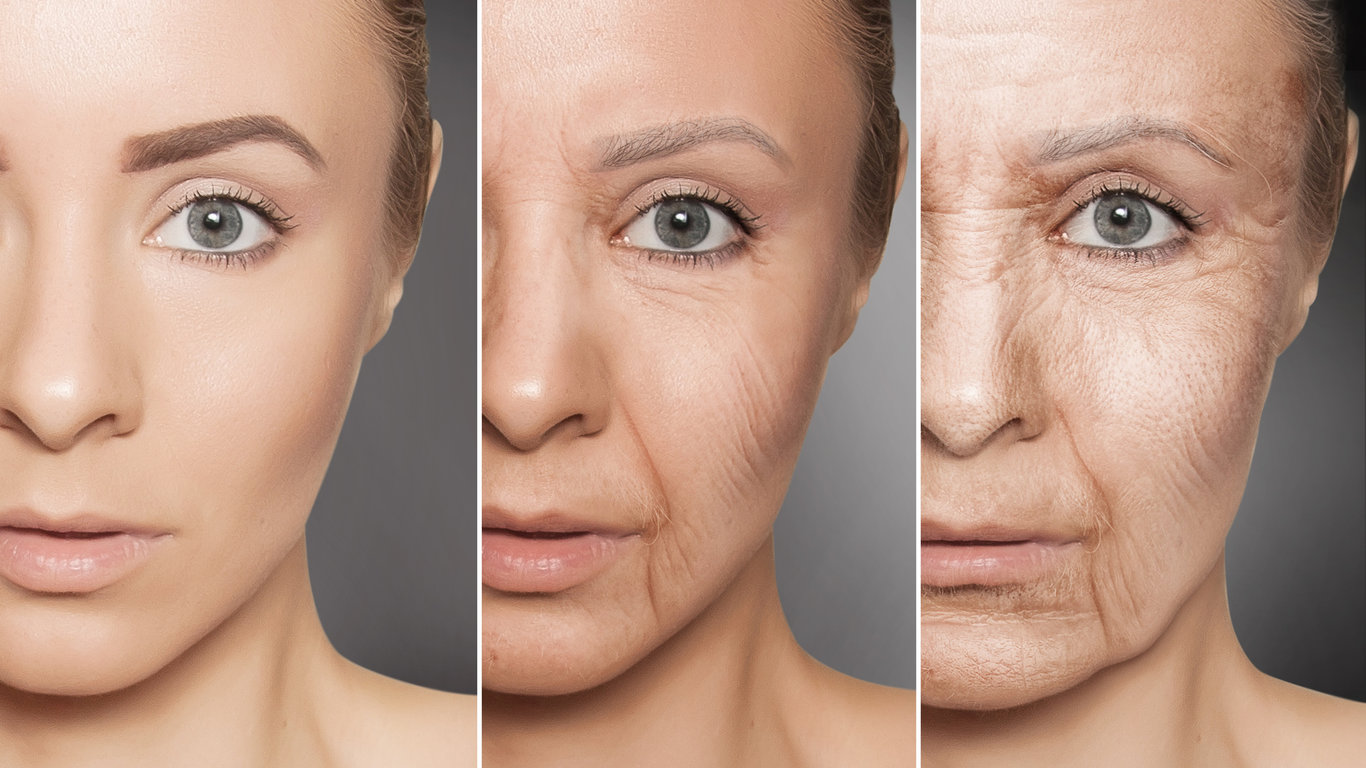 24/7 Wall St.
24/7 Wall St.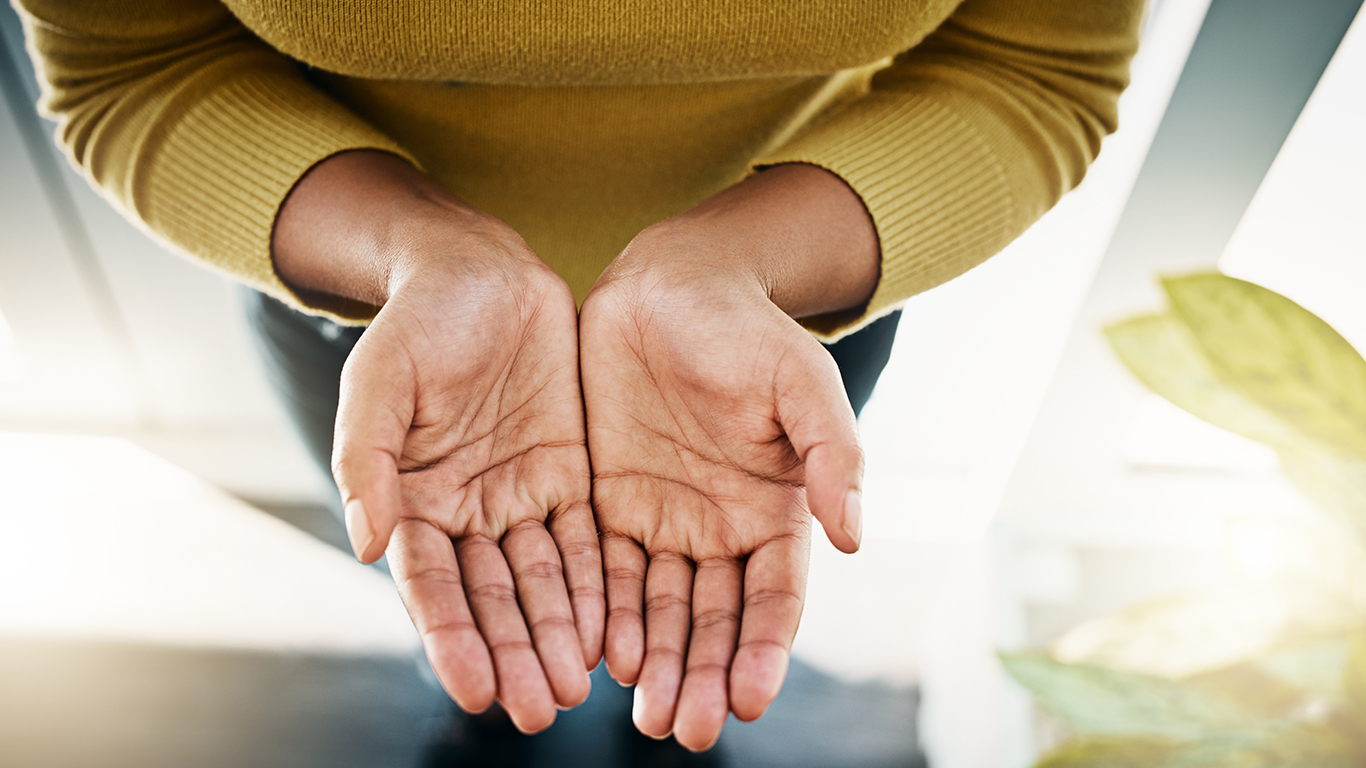 24/7 Wall St.
24/7 Wall St. 24/7 Wall St.
24/7 Wall St.
